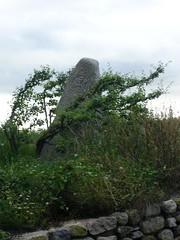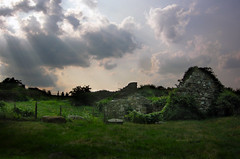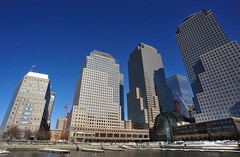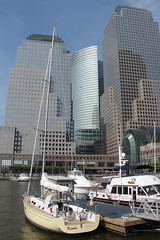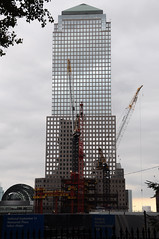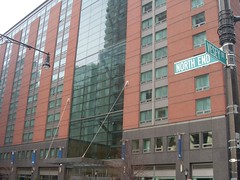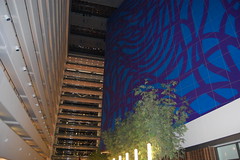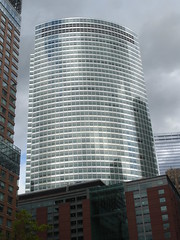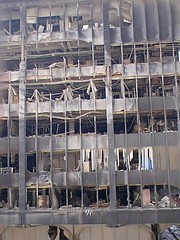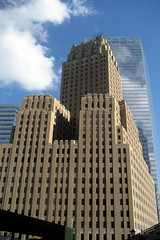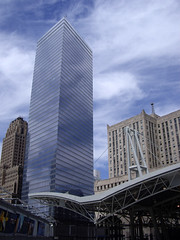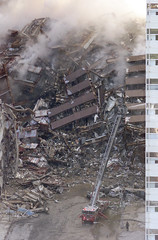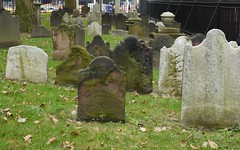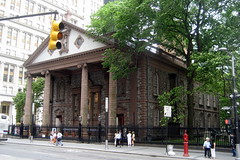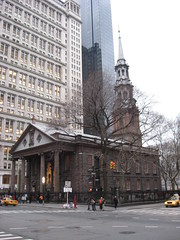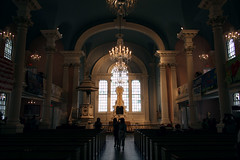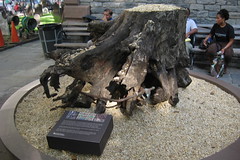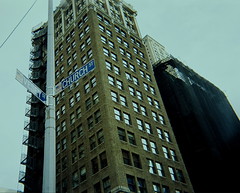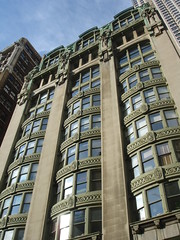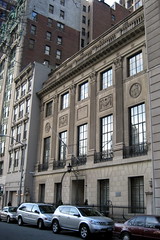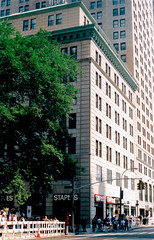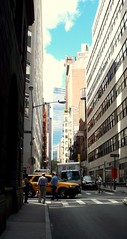South:

222 (block): From approxi- mately this corner to
the northwest corner of Pearl and Maiden Lane was
the farm of Anthony ''the Turk'' Jansen, whose wife,
Grietse Reyniers, was New Amsterdam's first prostitute,
arriving here in 1633.
Later, this corner was the site
of the Spring Garden, New York's first pleasure garden,
which opened ealy in the 18th Century
and lasted until 1768.
By 1834, this was the site of Scudder's Museum,
which featured elaborate dioramas, a mummy,
scalps, John Hancock's signature, live
boa constrictor feedings and a wax statue
of Daddy Lambert, known as the fattest New
Yorker ever.
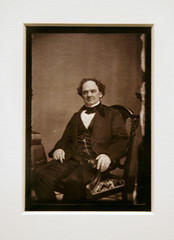
In 1841, Scudder's became
P.T. Barnum's enormously popular
American Museum,
where midget
Tom Thumb and Siamese twins
Chang and Eng performed. The famous sign marked
''This Way to the Egress'' tricked visitors into
exiting. When the museum burned down on July 13, 1865,
a Bengal tiger escaped and had to be killed
on Broadway by a firefighter.
From 1866-96 here was the
New York Herald Building, home of the
racist, anti-Semitic newspaper founded by
James Gordon Bennett. It introduced such
features as the gossip column and Wall
Street coverage, and was the paper that sent
Henry Stanley to look for the missing Dr.
David Livingstone.
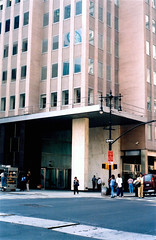
From 1898-1958 the
St. Paul Building was here,
which one architecture critic called
''perhaps the least attractive design of all New York's skyscrapers.''
The current building served as the offices
of Michael Douglas and Charlie Sheen in the
movie Wall Street.
Bennett Building
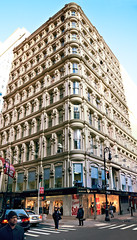
Corner (93-99 Nassau): Built by the New York Herald's James
Gordon Bennett Sr. in 1873, to a Second Empire design by Arthur Gilman; extensive additions
from 1890-94. Described by the AIA Guide
as "a glassy building with a deeply 3-dimensional
and lavish cast-iron structural grid." With four stories added to its original six, this may be the tallest cast-iron building in the world.
| 
